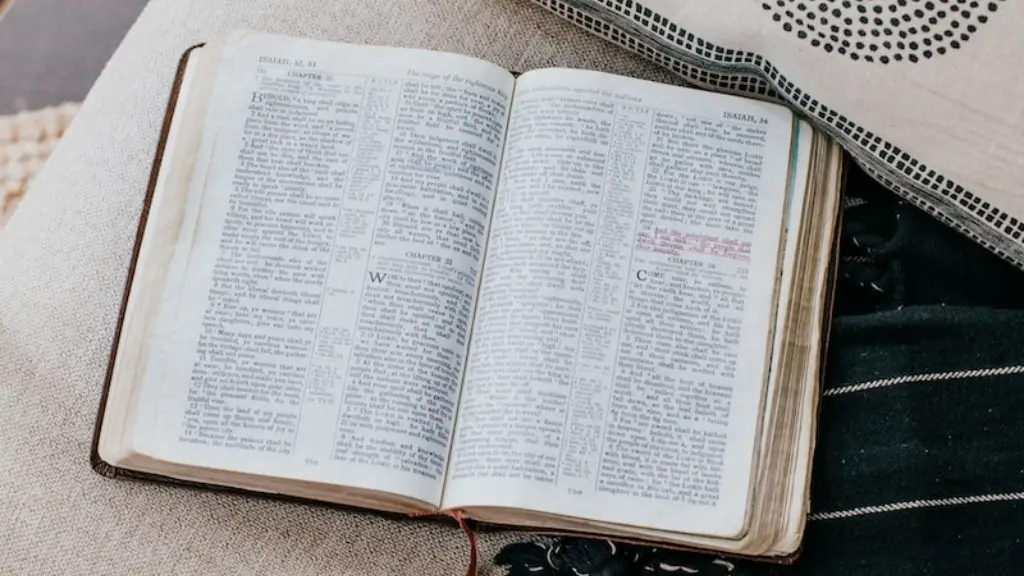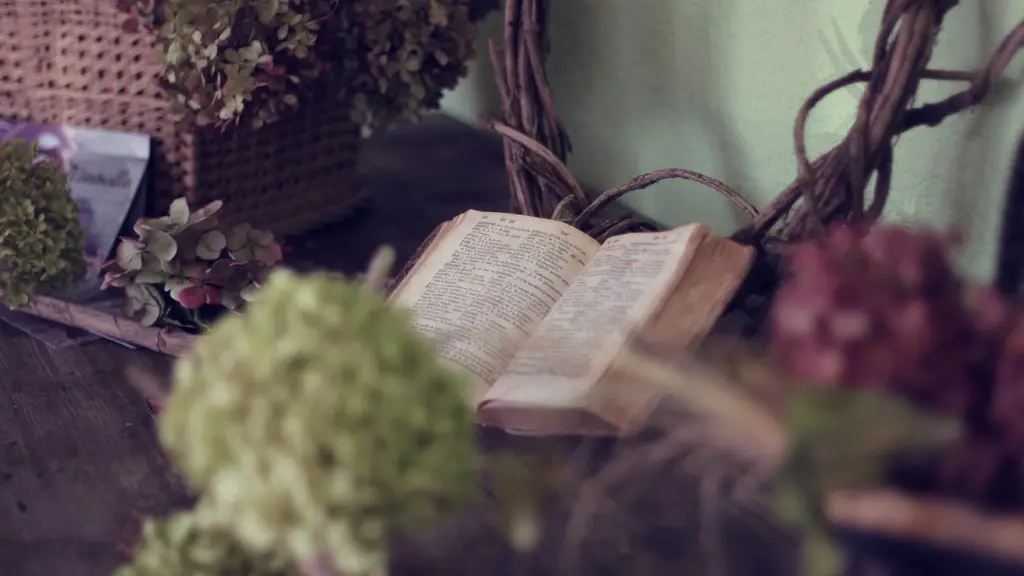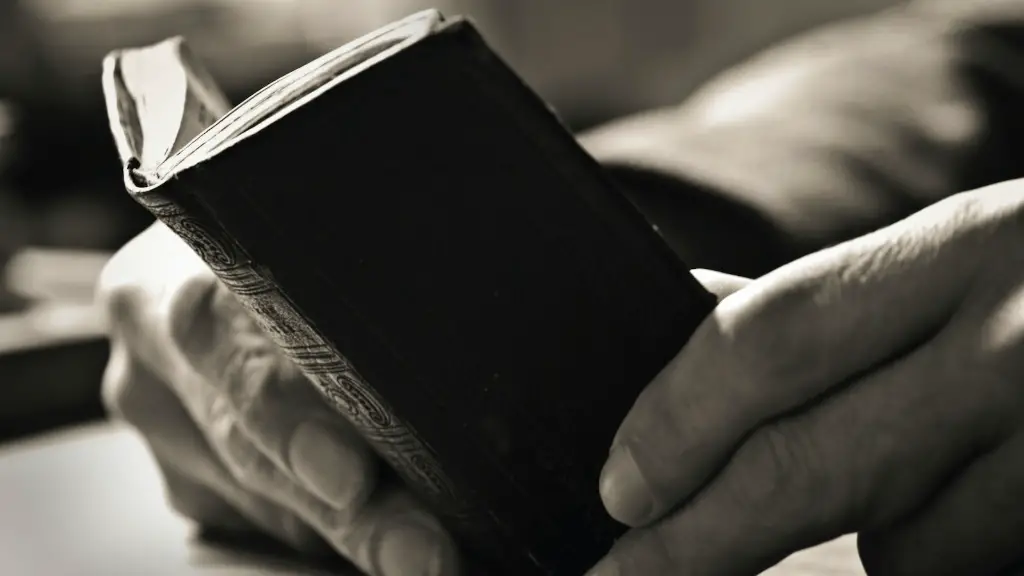Symbolism
A rainbow has been seen as a symbol of hope and peace throughout the centuries. In the Bible, a rainbow is a symbol of God’s promise and covenant between God and all living creatures.
The rainbow appears in the Biblical flood narrative, when Noah, after the rainbow appears, finds reassurance that the floodwaters have receded. In the Bible’s story of creation, the rainbow appears after God creates the world, signifying his promise to never again flood the Earth.
In other biblical stories, a rainbow is used by God to signify his presence or to as a sign from heaven. In Ezekiel 1:28, the Prophet Ezekiel has a vision of a throne, surrounded by a rainbow that has “the appearance of an emerald.” In this instance, the rainbow is a sign from God himself.
In Christianity, a rainbow is often associated with the end of days, when Jesus will come and the Second Coming of Christ will occur. This promise, described in the Bible as an “eternal covenant”, signifies a sense of hope and optimism that is present throughout the Christian faith.
Interpretations
The meaning of the rainbow in the Bible has been interpreted differently over time. Reform Jews believe it is a sign God’s covenant and assurance that all mankind will not be punished again for their sins. Catholics and some Protestant denominations have interpreted it as a sign of God’s promise to uphold a relationship between himself and his believers.
In Eastern Orthodoxy, the rainbow is symbolic of the Holy Spirit, and other Christian denominations interpret it as a symbol of rebirth and new beginnings. Other cultures interpret the rainbow as a message of hope and reassurance that despite struggles and hardships, the present moment can be filled with hope, joy, and faith.
Each of these interpretations shows how the rainbow has been seen as a symbol of hope, peace, and renewal throughout many cultures and religions, including Christianity.
Rainbow Covenant
The rainbow covenant is an important part of the story of Noah, where God makes a promise to never again create a flood that will destroy the world. This promise is sealed with the impending rainbow, which serves as a reminder of the faithfulness of God, even in difficult times.
The rainbow holds special meaning in the Bible. It is seen as a reminder of God’s faithfulness, His promise not to harm, but to bring peace and hope to the world. While Christians can look forward to a future of new beginnings, of faith, and of redemption, the rainbow reminds us that God will provide assurance and comfort in this lifetime too.
Importance of the Rainbow
The rainbow has been seen as a symbol of hope and peace throughout the centuries. In the Bible, the rainbow serves two primary functions. Firstly, it is an outward sign of God’s promise to never again punish the world with a flood. Secondly, the rainbow’s colours represent the hope, faith, and new beginnings that humanity can experience within this lifetime.
Rainbows are a common form of natural beauty that can leave us in awe and truly inspire. It is no coincidence then, that a rainbow’s arch of colours has been used to symbolise hope and renewal in the Bible. Its reminder of God’s promise and the promise of hope and redemption is an integral part of the Christian faith.
Metaphorical Use of the Rainbow
The rainbow has also been used as a metaphor for the spiritual truth of God’s promises, particularly in the Bible. The rainbow’s colours represent the rainbow of promise that God makes to his believers. It reminds them of their faith and encourages them to keep their faith in God, no matter the circumstances.
The promise of a rainbow has given many people strength and certainty through dark times. Its beauty can provide a reminder of the peace and hope of the afterlife, and the assurance of God’s ultimate promise. The rainbow is a reminder to his believers that God will never forget them, no matter what adversity they face.
Rainbow and Nature
The symbolism of a rainbow is not limited to faith; it can also be found in nature. A rainbow is often seen after a storm or in some other form of natural beauty. It can serve as a reminder that on the other side of darkness and sorrow, there is beauty and light. Rainbows can be a way for us to tap into the beauty and power of the natural world and connect with God’s creation.
Rainbows have been used to symbolise luck, hope, and even immortality. It can also be seen as a reminder of the connection between man and the environment, a reminder that we are all part of a larger natural balance. The rainbow can serve as a symbol of the importance of preserving the environment and recognizing the vital interconnectedness of the earth and its inhabitants.
Rainbow and Art
Rainbow symbolism is pervasive in art and literature. The spectrum of colours, the promise of hope, and the reminder of God’s faithfulness are all elements of creative expression found in works of art. A rainbow was painted by Michelangelo on the ceiling of the Sistine Chapel, and a rainbow is mentioned in Dante’s classic work The Divine Comedy.
The rainbow has also been featured in literature, film, and other forms of art for centuries. In all these mediums, the rainbow is used to convey a sense of hope, renewal, and belief. No matter the form, the rainbow has profound symbolisms that can bring comfort and reassurance to those who embrace and understand its meaning.
Rainbow and Psychology
The psychology of a rainbow can be profound, as the beauty and meaning of the rainbow can reach deep into a person’s soul. For some, the rainbow may serve as a reminder of hope and faith. For others, the rainbow may bring comfort and security in times of fear or uncertainty. The beauty and assurance of the rainbow can bring a sense of peace and wellbeing to many people.
The rainbow has also been used to explore topics such as color theory and the psychology of color. Psychologists believe that color can be linked to emotions, and the rainbow’s range of colors can evoke different feelings in people. For example, the dark shades of a rainbow might bring feelings of sorrow, while the brighter colors may bring feelings of joy or happiness.
Conclusion
The rainbow is a symbol of God’s covenant with mankind, and its symbolism is tied to a different times and cultures but has endured to this day. It conveys a sense of hope, comfort, and renewal, and its beauty can be used for inspiration and artistic expression. The rainbow is also a reminder of the connection between ourselves and the world around us and the importance of preserving our environment. As a symbol of faith, hope, and peace, the rainbow will continue to be seen as a powerful message of strength and assurance.


